Range Rover Evoque: Locks, Latches and Entry Systems
Principle of Operation
For a detailed description of the locks, latches and entry systems and operation, refer to the relevant Description and Operation section of the workshop manual REFER to: Handles, Locks, Latches and Entry Systems (501-14 Handles, Locks, Latches and Entry Systems, Description and Operation).
Inspection and Verification
CAUTION: Diagnosis by substitution from a donor vehicle is NOT acceptable. Substitution of control modules does not guarantee confirmation of a fault and may also cause additional faults in the vehicle being checked and/or the donor vehicle NOTE: Check and rectify basic faults before beginning diagnostic routines involving pinpoint tests
1. Verify the customer concern, to be sure the correct issue is investigated
2. Visually inspect for obvious signs of mechanical or electrical damage
Visual Inspection

3. If an obvious cause for an observed or reported concern is found, correct the cause (if possible) before proceeding to the next step
4. If the cause is not visually evident, verify the symptom and refer to the Symptom Chart, alternatively check for Diagnostic Trouble Codes (DTCs) and refer to the DTC Index
Symptom Chart
NOTE: Complete the diagnostic steps below to confirm any concern prior to replacing any component
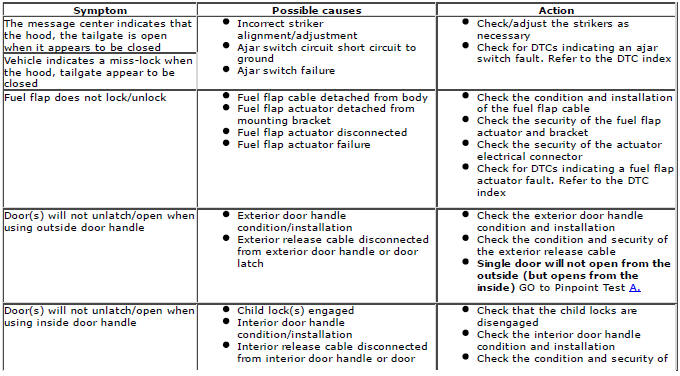
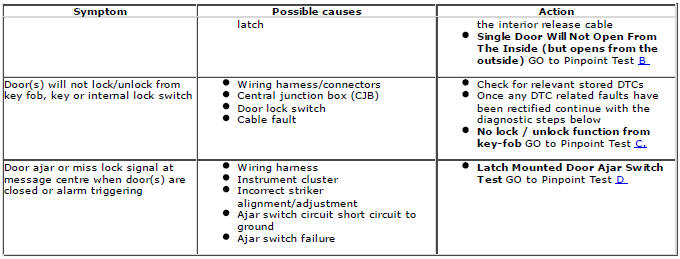
DTC Index
For a list of Diagnostic Trouble Codes (DTCs) that could be logged on this vehicle, please refer to Section 100-00 REFER to: Diagnostic Trouble Code (DTC) Index - DTC: Central Junction Box (CJB) (100-00 General Information, Description and Operation) / Diagnostic Trouble Code (DTC) Index - DTC: Driver/Passenger Door Module (DDM/PDM) (100-00 General Information, Description and Operation).
Pinpoint Test
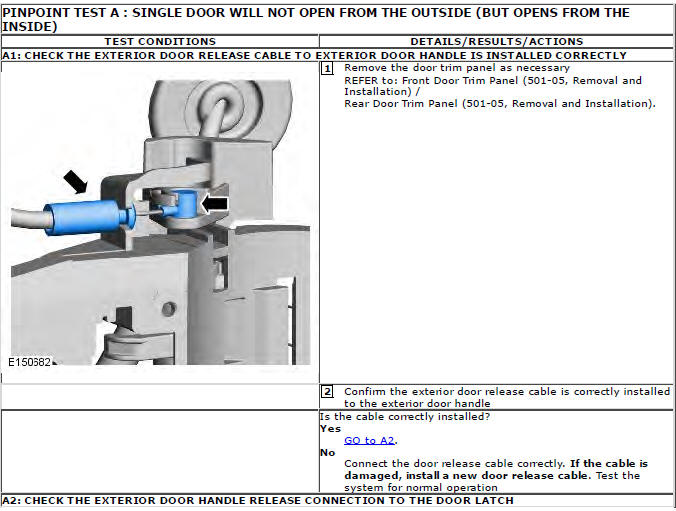
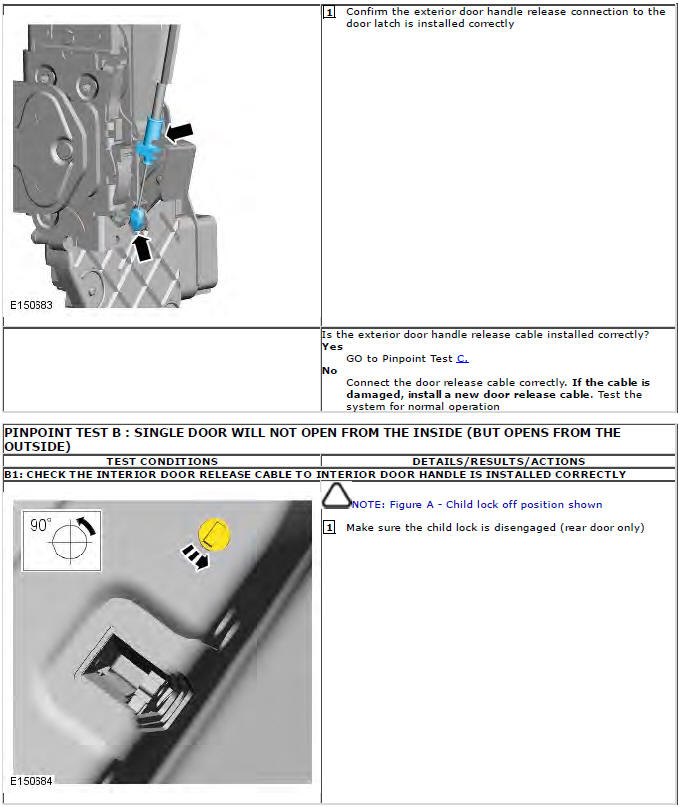
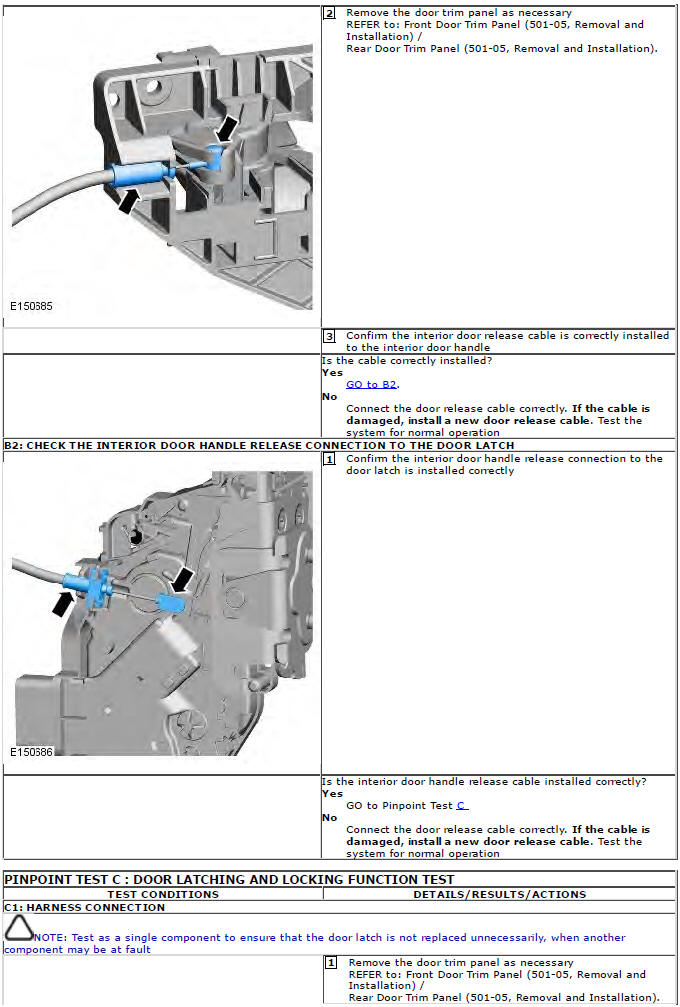
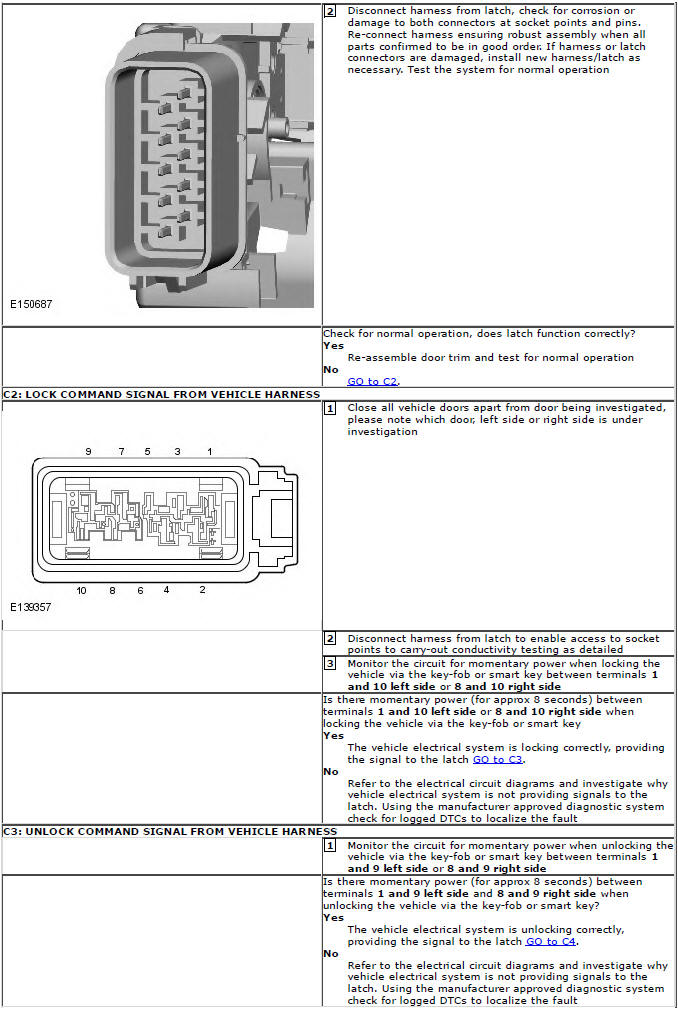
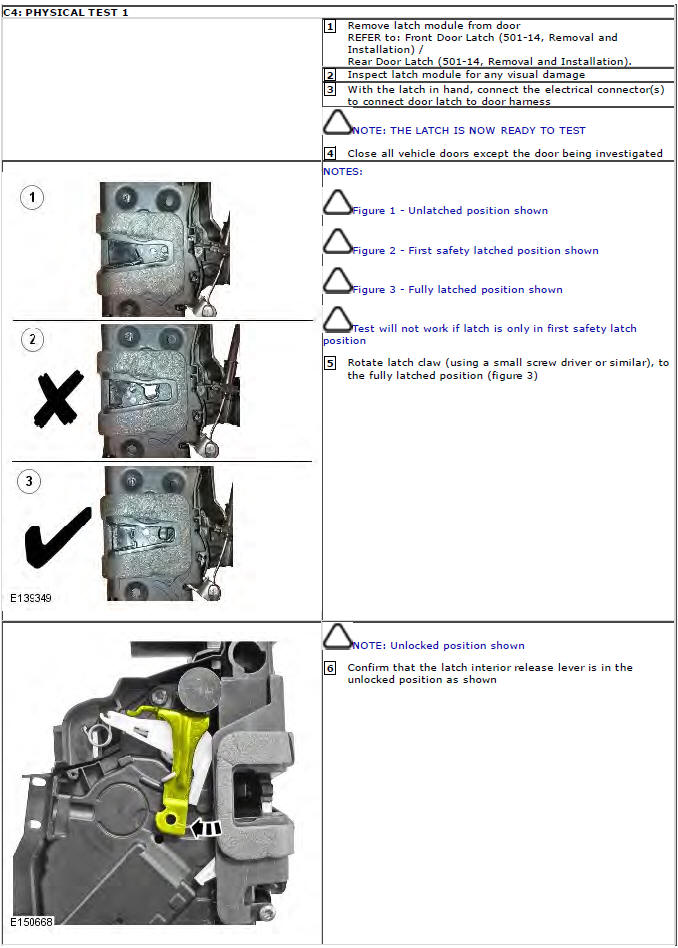
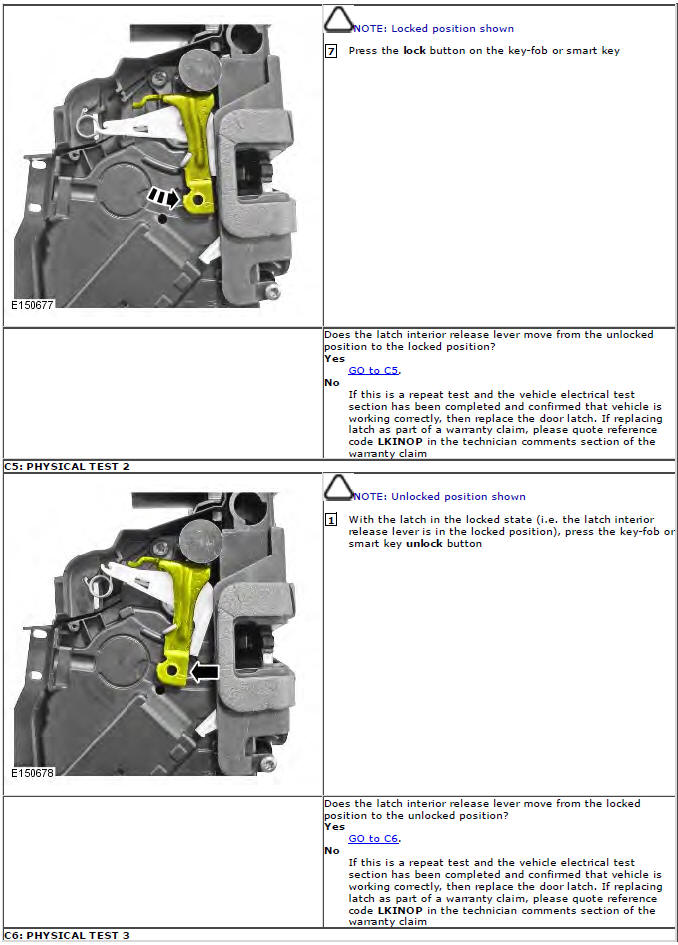
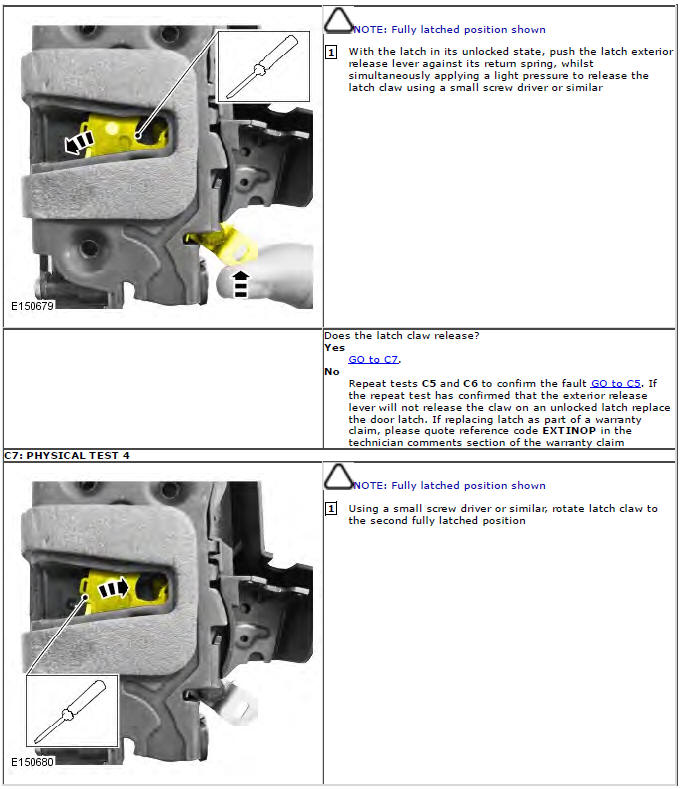
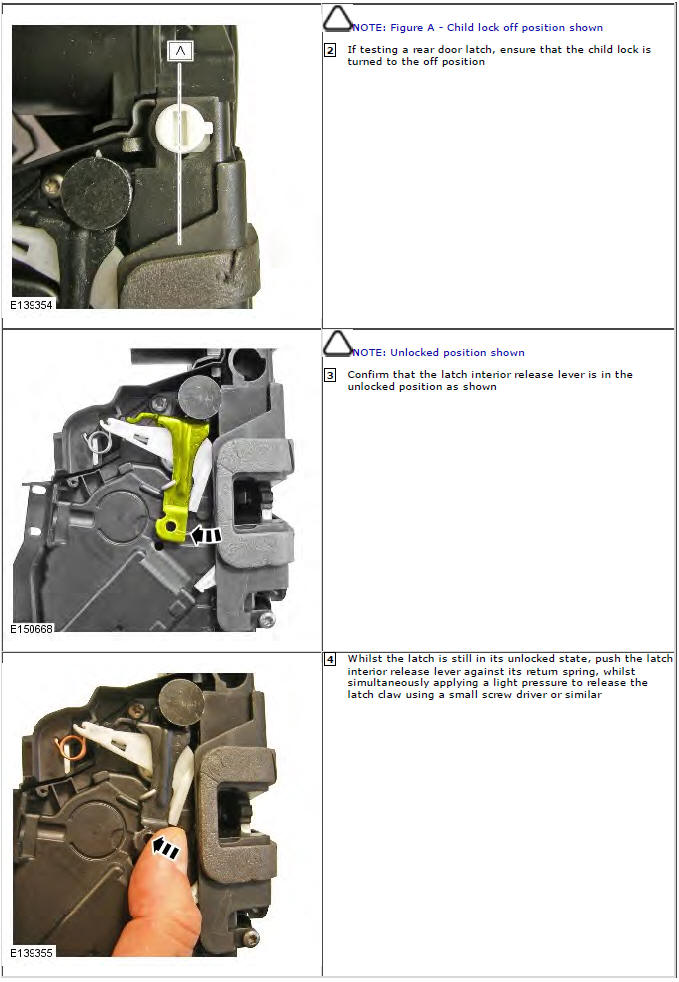
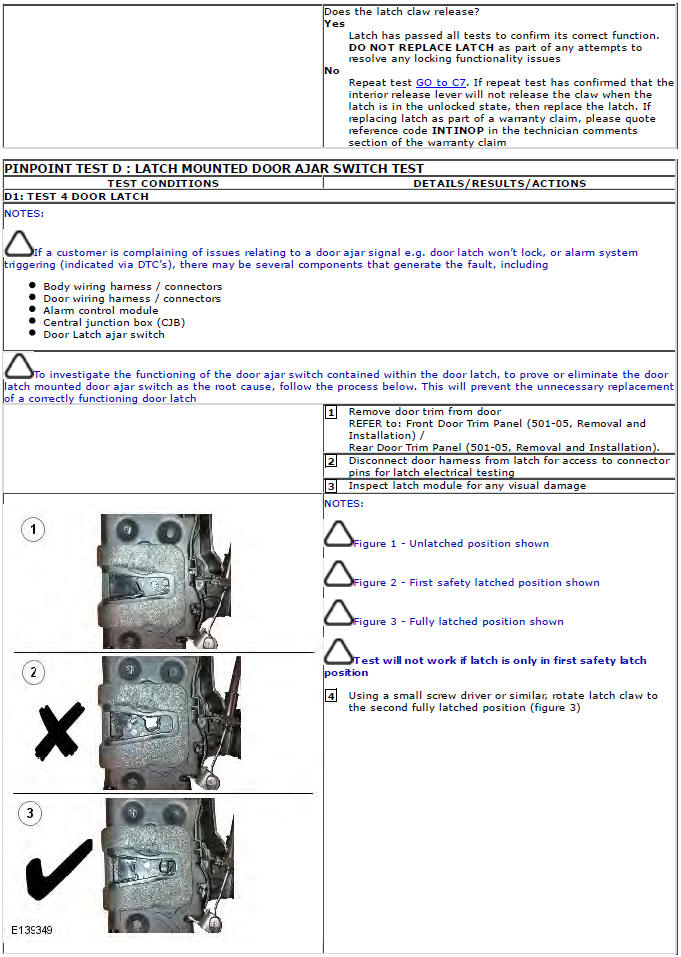
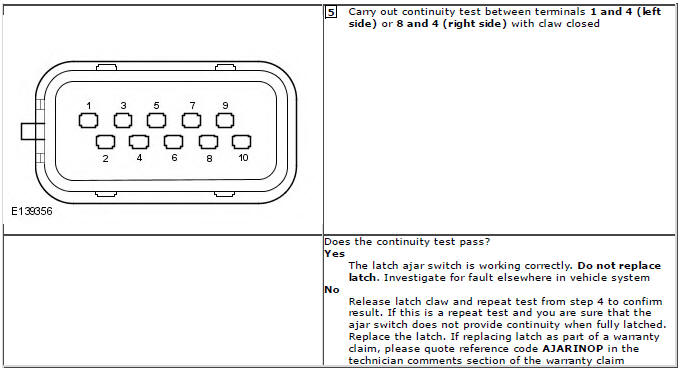
Handles, Locks, Latches and Entry Systems - Component Location
NOTE: Left-Hand Drive (LHD) shown; Right-Hand Drive (RHD) similar.
COMPONENT LOCATION
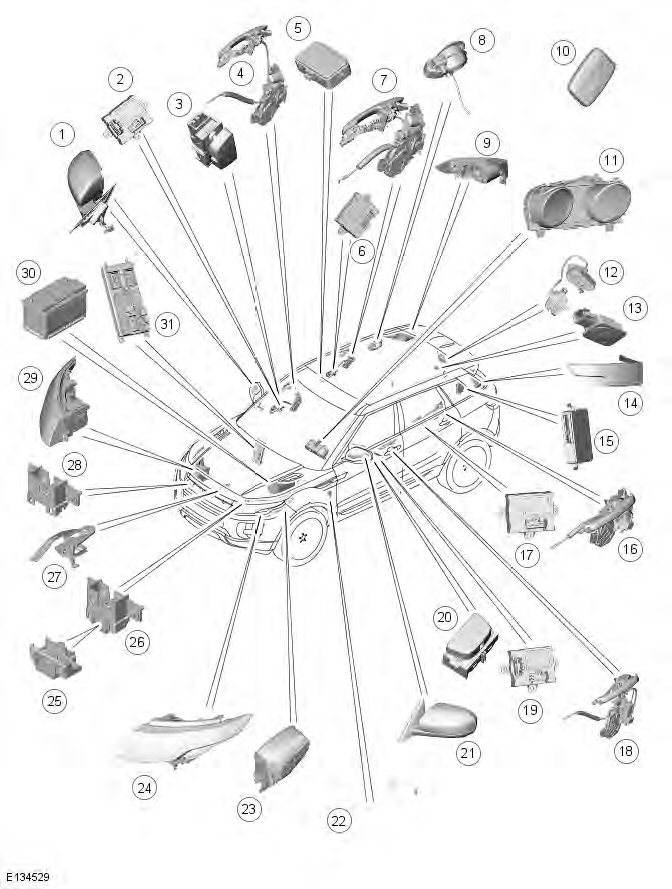
- RH (right-hand) door mirror
- RH front door module
- Passenger lock/unlock switch
- RH front door latch mechanism
- Radio frequency (RF) receiver
- RH rear door module
- RH rear door latch mechanism
- Fuel flap release motor
- RH tail lamp unit
- Remote handset
- Instrument cluster
- Liftgate latch mechanism
- Liftgate release switch
- LH (left-hand) tail lamp unit
- RFA (remote function actuator) / KVM (keyless vehicle module)
- LH rear door latch mechanism
- LH rear door module
- LH front door latch mechanism
- LH front door module
- Driver lock/unlock switch
- LH door mirror
- Bonnet release cable
- BJB (battery junction box)
- LH headlamp
- Bonnet switch
- LH bonnet latch
- Bonnet safety hook
- RH bonnet latch
- RH headlamp
- Battery
- CJB (central junction box)
Handles, Locks, Latches and Entry Systems - Overview
OVERVIEW
All the vehicle hinged panels are secured by latches with mating strikers. The latches incorporate panel ajar switches that will inform the driver of an open access point.
The central locking system is operated by either the remote handset or the front door central locking buttons. The central locking system controls the automatic locking and unlocking of the vehicle entry points. The software used to control the central locking system is incorporated within the CJB (central junction box).
The central locking system is also integrated with the interior lighting function. The interior lights and exterior mirror lamps are illuminated via the RF receiver and CJB following a valid unlock request from the remote handset. For additional information, refer to: (417-02 Interior Lighting)
If configured by the dealer, the exterior door mirror power fold function is also operated by the central locking system.
A concealed mechanical door lock is provided in the front LH (left-hand) door exterior handle, and is used to gain access to the vehicle if the battery is discharged or the central locking system fails.

